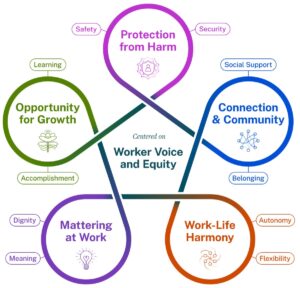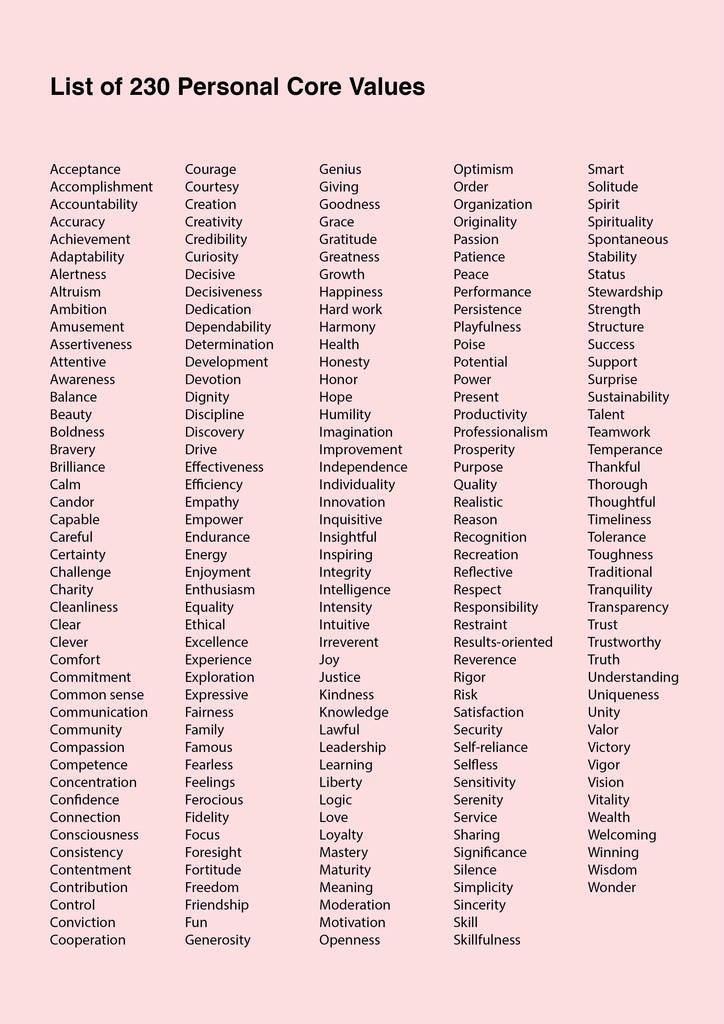Aligning Professional Paths With Our Values

Working in an unpredictable industry and an unstable economy can sometimes mean that we say “yes” to every job and gig that comes along, without much further introspection. When rent is due, the bills keep coming in, and taxes are relentless, it can be challenging to objectively look at the path we are on and honestly reflect upon whether we’ve lost our way.
I recently saw a quote with an analogy about understanding your worth, which said:
“A bottle of water is 50 cents at a supermarket. $2 at the gym. $3 at the movies and $6 on a plane. It’s the same bottle of water. The only thing that changed its value was the place. So, the next time you feel your worth is low, maybe you’re just at the wrong place”.
This brought up memories from many years ago; I had been reading a job advert, and as I made my way through the specifications and company values, I was surprised to see a long list of attributes that I considered to be my negative quirks and flaws. These traits were making my life increasingly difficult and hostile in the role I was in at the time, and I had started to view myself in a distorted way as a result. It was a real wake-up call that I’d become stuck in a harmful rut with my work and wasn’t where I wanted to be. Although it was difficult to acknowledge, it was a brutal reminder to go where you are celebrated, not tolerated.
The Impact of Environment
A 1984 study by Roger Ulrich discovered that hospital patients recovering in rooms with a view of nature recovered considerably better, and had a much higher survival rate than patients with a view of a brick wall. Subsequent research has found that creating safe conditions that include being within easy reach of the nurses physically and having access to a call button, having privacy and peace, as well as the view of nature, impacted recovery even more positively. Although this might seem obvious and intuitive if we apply these criteria to our working environments, these ideals can seem like a luxury when we are juggling multiple roles to get by, are seeing through the end of a contract, or are struggling to line up the next gig.
Workplace toxicity impacts both physical and mental health, and it’s well-documented by medical professionals. In the Framework for Workplace Mental Health and Well-Being, U.S. Surgeon General Vivek H. Murthy, MD explains that “Chronic stress can lead to depression, heart disease, cancer, and other illnesses.” So, perhaps we should consider the environments in which we work and reside far more carefully, and view them as less of a luxury and more of a necessity.
Murthy’s framework outlines five essentials people require in the workplace, which are grounded in human needs, and are universal across industries and roles. While a toxic culture is defined by disrespect, non-inclusivity, unethical practices, cutthroat competition, and abuse, the inverse is outlined in the five essentials for workplace mental health and well-being.

Moving On
Hatching an escape plan can take time when factoring in the nuances of our circumstances, such as how much or how little help we have in our network, and ways in which we might need to realign and heal from the impact of the toxicity. When appreciating the idiosyncrasies of a niche, tight-knit industry or of freelance work, there is often no one person or organisation available for support and advice. Lauren Florko Pd.D. recommends in Psychology Today that finding solace beyond the professional environment is a crucial first step. Florko writes:
“In extreme cases, where a toxic work environment persists, and internal resources are scarce, seek support outside of work. This can be found through career coaches, therapists, health practitioners, and/or spiritual or religious leaders. Creating a robust support system beyond the office can provide the necessary resilience to endure and, if needed, make a strategic exit.”
Acquiring the tools to move on successfully requires not only a fresh start in the external world but also inner work to find cognitive closure. Harvard Business Review recommends therapeutic exercises for processing the experience, implementing self-care in the form of forgiving your past self, and using the knowledge you now have to propel you forward:
“Self-compassion goes a long way to rebuild your confidence, as does taking your power back through constructive action that strengthens your sense of self. Put what you learned from your last role to good use by clearly communicating your boundaries and expectations.”
Aligning with Culture and Values
When we’re looking for our next client or role, aligning with culture and values is key to meeting our five essential needs as outlined by Murthy, but what does this mean, and what does it look like in reality?
Understanding your core values is integral to making the best choices in all areas of life. When we live in alignment with our values, we feel happy, and when we live out of alignment, this is when we struggle, because inwardly we know that something is wrong.
While we all hold many values, our core values are our most highly prioritised, top 5. It can be useful to go through a list and narrow down which are important to you.

When we have our core values, it then helps to look at how we can live by these values through our actions, and identify where we might be out of alignment, both personally and professionally. What do these values mean to you by your definition, on a micro and macro level, and are they specific instances, or more of an experiential sensation?
By following this process, we can become aware of where and what we would like to change in our lives and seek out those values in both our behaviours and in the actions of others. Being mindful of our core values when researching and meeting new clients, collaborators, and companies from the outset is useful for keeping us on the path we wish to follow.
Our core values may naturally move and change over time, however, if we keep them in mind as we go through life, it is much easier to notice when things are out of alignment sooner rather than later and adjust accordingly.
by: Michelle Sciarrotta
Back to Home
Editor's Note: At StageLync, an international platform for the performing arts, we celebrate the diversity of our writers' backgrounds. We recognize and support their choice to use either American or British English in their articles, respecting their individual preferences and origins. This policy allows us to embrace a wide range of linguistic expressions, enriching our content and reflecting the global nature of our community.
🎧 Join us on the StageLync Podcast for inspiring stories from the world of performing arts! Tune in to hear from the creative minds who bring magic to life, both onstage and behind the scenes. 🎙️ 👉 Listen now!
